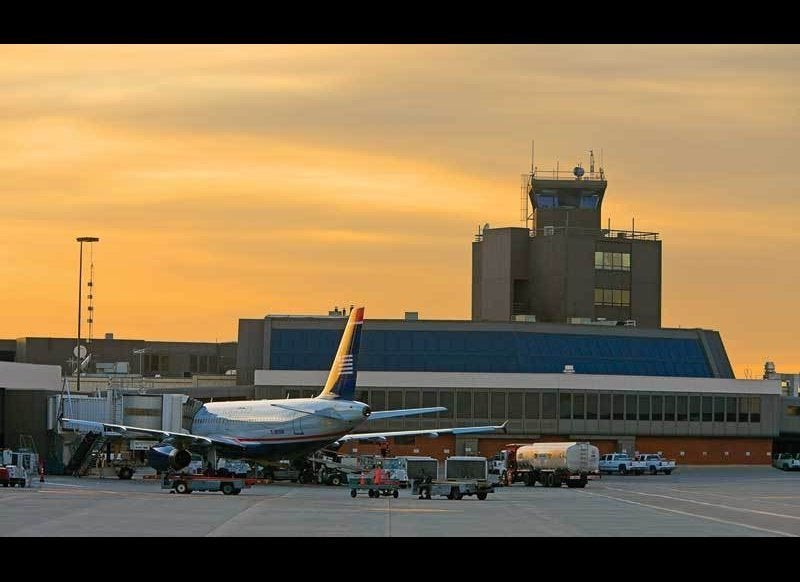
Turbulence is, in our opinion, the hands-down scariest part of flying -- and yet we’ve always heard it’s nothing to worry about.
But when the plane bumps hard enough to send potato chips soaring like miniature eagles, isn’t something wrong? What IS turbulence, anyway?!
Answer: it's random.
“Turbulence can’t be predicted,” says Larry Cornman, a turbulence specialist with the University Corporation for Atmospheric Research. “A pilot can’t predict what’s going to happen in a few minutes, or in a few seconds, even.”
Turbulence, he explains, comes from many sources: jet streams of fast-moving air, thunderstorms (either near OR far from the plane) and wind whipping over mountains then crashing down the other side.
The best way to imagine it, says Cornman, is as an eddy in a stream -- those little pockets where water rolls over rocks on an otherwise smooth surface. These turbulence eddies range from about the size of a plane to about five times the size of a plane, according to Cornman.
But because pilots can’t see air -- and because storms can impact air up to 100 miles away from their origins -- there is not a hard-and-fast way for pilots to know when they'll encounter turbulence in a flight.
Not feeling better yet? Hold on:
Pilots work really hard to prep for turbulence.
A pilot’s job in avoiding turbulence starts the instant he wakes up, Captain Chesley "Sully" Sullenberger, who famously landed a plane in the Hudson River following a bird strike, tells us.
Sully -- and all good pilots, he says -- checks the weather before he leaves the house and scans the sky on the drive to the airport, looking for clouds. (Saucer-shaped clouds mean air is being forced over mountains. And puffy cumulonimbus clouds? Those are thunderstorms.) Then, he'll check his radar in-flight and listen to his radio, hearing other pilots discuss which altitudes they’ve flown that day for clear air.
Because there’s not a whole lot they can do to foresee turbulence, pilots' brains are always spinning. “You build mental models before you even get to work,” Sully says. “As pilots, we work very hard not to be surprised by anything.”
And they make adjustments to avoid it.
To avoid turbulence, Sully says pilots have two options: they can ascend or descend in search of “clearer air,” or they can slow down to minimize that bumpy feeling.
Either way, decisions are usually made spur-of-the-moment, right there in the cockpit. “We either hear reports [on the radio] from flights ahead of us, or we see conditions ahead that might be conducive to turbulence,” says Sully. “Much of it is real-time decision making.”
During turbulence, your plane isn’t “bumping” around -- it’s just speeding up and slowing down.
“In most turbulence, what you feel is a sudden acceleration,” Sully says. “People describe it as falling, but that’s just their perceptive sensors misleading them.” While a plane can jar a few feet up or down in the air, he says, most of the time you’re just feeling a speed change caused by wind drafts.
Different types of turbulence cause planes to move in different ways, so no seat is guaranteed the smoothest ride. But, as Cornman explains, a plane will pitch -- or rotate around its center of gravity -- least near its wings.
It's extremely unlikely you'll get hurt during turbulence.
“It’s a virtual certainty that you’re not going to be injured,” says Sully... provided you’re wearing your seatbelt. Everyone we've spoken with -- a scientist, pilot and flight attendant -- said wearing a seatbelt is a nearly foolproof way to stay safe during turbulence. It’s all you can do, and it’s all you need.
Only 11 passengers were injured during turbulence in 2013, and as Cornman points out, injuries tend to occur only when people unbuckle. "You're not going to get injured if you're strapped in," he explains. "You're just going to get bounced around."
And there’s a way you can get over your turbulence fear, too.
Sully gives his passengers a simple assignment: Next time you’re riding in a car, close your eyes. Focus on every bump, jive and jostle the car encounters on the road. A plane is just the same -- trips, by nature, are rarely completely smooth.
“We know how cars work, so we’ve become desensitized to it,” Sully says. “But car rides are typically much bumpier than flights.”
How do you feel about turbulence? Weigh in with our poll below.
The HuffPost/YouGov poll was conducted Nov. 14-17 among 1,000 U.S. adults using a sample selected from YouGov's opt-in online panel to match the demographics and other characteristics of the adult U.S. population. Factors considered include age, race, gender, education, employment, income, marital status, number of children, voter registration, time and location of Internet access, interest in politics, religion and church attendance.
The Huffington Post has teamed up with YouGov to conduct daily opinion polls. You can learn more about this project and take part in YouGov's nationally representative opinion polling. Data from all HuffPost/YouGov polls can be found here.
